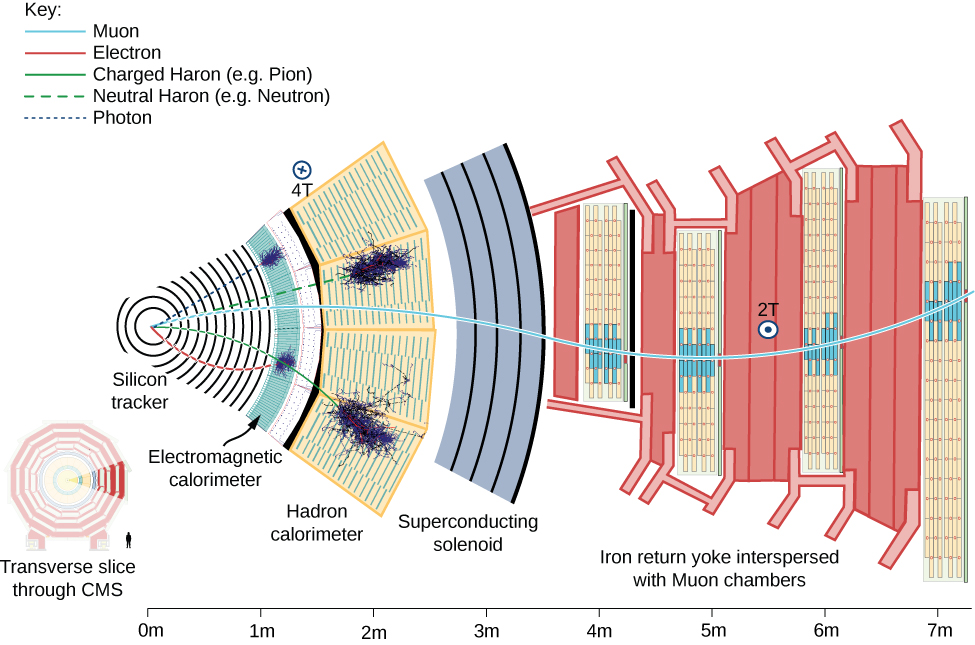| << Chapter < Page | Chapter >> Page > |
where and are the total energies of the incoming particles (1 and 2), and are the magnitudes of their momenta, and and are their rest masses.
The beam energy is therefore
The rest mass energy of the particle created in the collision is equal to the center-of-mass energy, so
Check Your Understanding Why is a symmetric collider “symmetric?”
The colliding particles have identical mass but opposite vector momenta.
Higher beam energies require larger accelerators, so modern colliding beam machines are very large. The LHC, for example, is 17 miles in circumference ( [link] ). (In the 1940s, Enrico Fermi envisioned an accelerator that encircled all of Earth!) An important scientific challenge of the twenty-first century is to reduce the size of particle accelerators.
The purpose of a particle detector is to accurately measure the outcome of collisions created by a particle accelerator. The detectors are multipurpose. In other words, the detector is divided into many subdetectors, each designed to measure a different aspect of the collision event. For example, one detector might be designed to measure photons and another might be designed to measure muons. To illustrate how subdetectors contribute to an understanding of an entire collision event, we describe the subdetectors of the Compact Muon Solenoid (CMS), which was used to discover the Higgs Boson at the LHC ( [link] ).

The beam pipe of the detector is out of (and into) the page at the left. Particles produced by pp collisions (the “collision fragments”) stream out of the detector in all directions. These particles encounter multiple layers of subdetectors. A subdetector is a particle detector within a larger system of detectors designed to measure certain types of particles. There are several main types of subdetectors. Tracking devices determine the path and therefore momentum of a particle; calorimeters measure a particle’s energy; and particle-identification detectors determine a particle’s identity (mass).

Notification Switch
Would you like to follow the 'University physics volume 3' conversation and receive update notifications?